The best comics to read right now: Fantasy TV edition
- Oops!Something went wrong.Please try again later.
- Oops!Something went wrong.Please try again later.
It's a great time for fantasy epics. With The Lord of the Rings: The Rings of Power and House of the Dragon both airing, it makes sense that a lot of people are interested in sword-and-sorcery stories right now.
Well, television isn't the only medium that can deliver on that front! Here, we offer some recommendations for comic books (several new or ongoing, plus a couple classics) that provide great fantasy storytelling. Check out the list below!
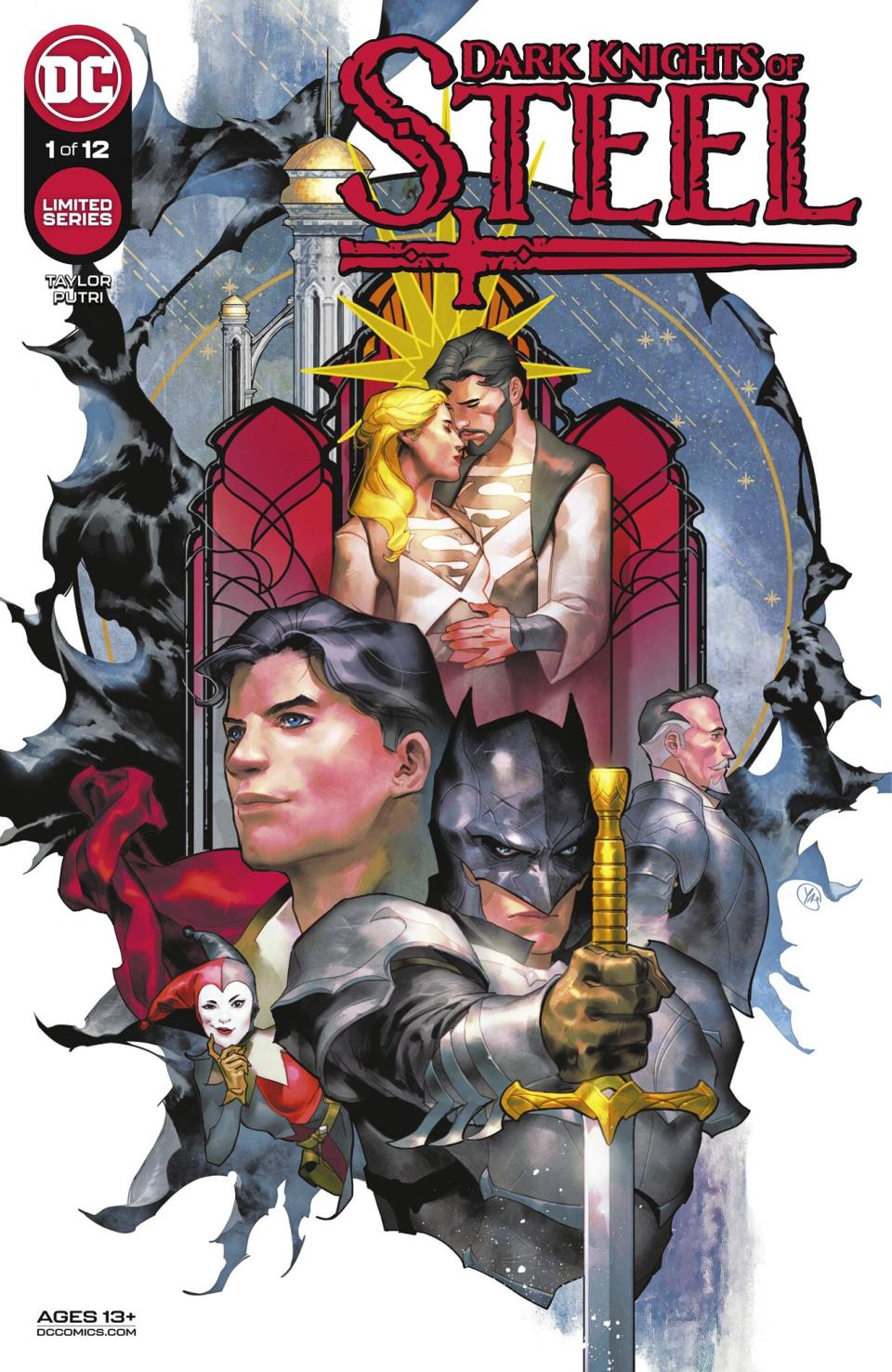
DC Comics The first issue of 'Dark Knights of Steel'
Dark Knights of Steel (DC Comics)
Tom Taylor (writer), Yasmine Putri (artist)
What if Game of Thrones took place in the world of DC superheroes? I mean, why not?
When Dark Knights of Steel was announced last year, its promised fusion of fantasy and superhero comics seemed like a clever gimmick. But writer Tom Taylor has previously proven his skill at making alternate-universe stories (like the zombie apocalypse comic DCeased) as engaging to read as canonical DC comics, and he brings that same fire to Dark Knights of Steel. These medieval incarnations of your favorite superheroes aren't exactly like the ones you know (in this world, Superman's parents survived the destruction of Krypton, Batman is half-Kryptonian, and Wonder Woman is romantically involved with Supergirl, to name a few adjustments), but that helps give them motivations around loyalty and inheritance that better fit the fantasy setting.
Plus, alternate universes grant much more creative freedom around killing big-name characters than is typically allowed in superhero comics. Taylor makes the most of this leeway, ruthlessly dispatching heroes and villains in page-turning plot twists that might make George R. R. Martin proud.
The first collected edition of Dark Knights of Steel is available in stores this month. This 12-part saga is only halfway over, but it already seems like it will sit comfortably on the shelf with classic alternate-universe comics like Superman: Red Son and Marvel 1602.
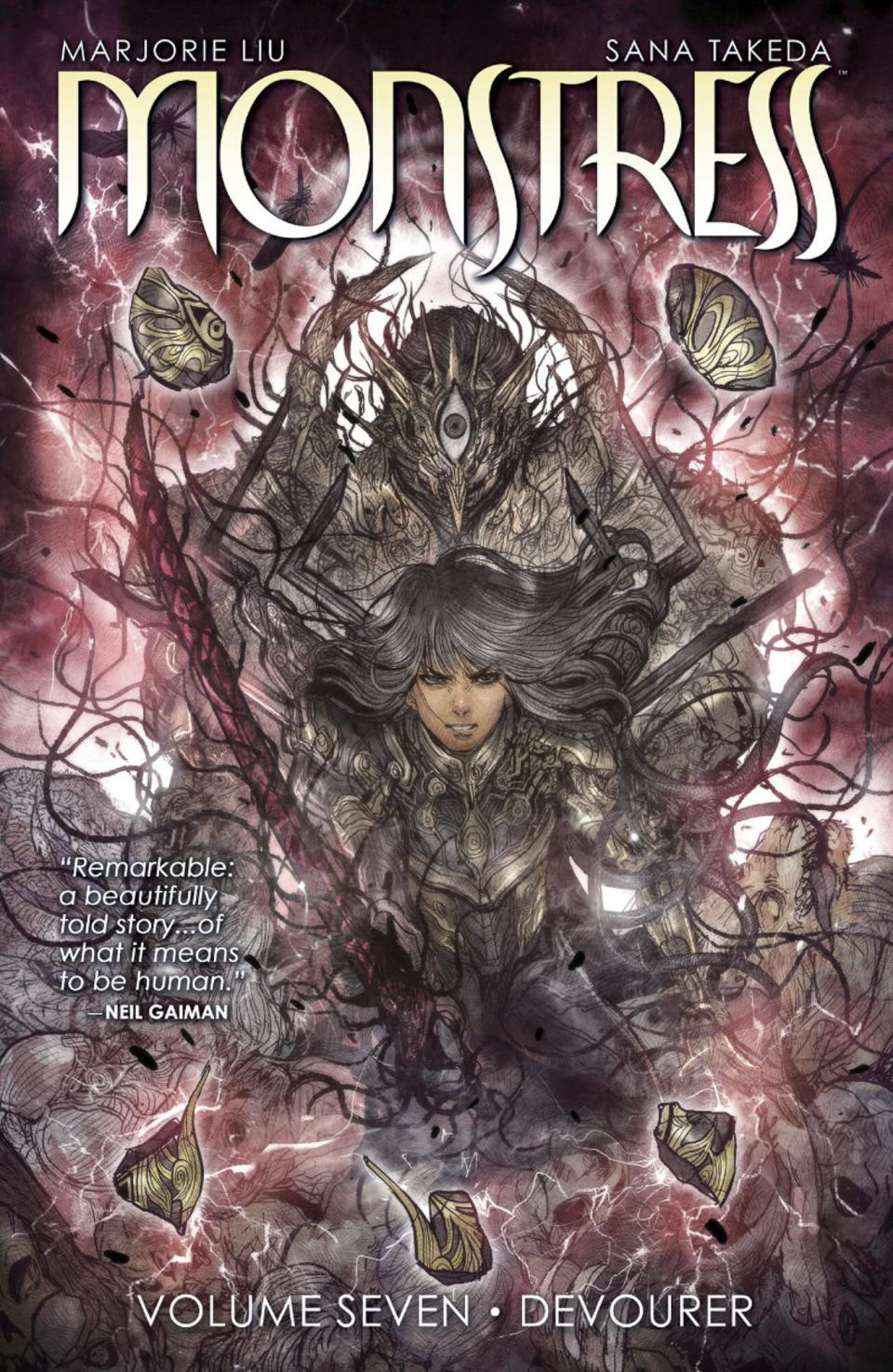
Image Comics The cover for volume 7 of 'Monstress'
Monstress (Image)
Marjorie Liu (writer), Sana Takeda (artist)
Monstress has been one of EW's favorite fantasy comics for a while, but it reached a new level this year. The latest story arc, available in a collected edition as of this week, finally brings some long-awaited revelations about the intricate world that creators Marjorie Liu and Sana Takeda have been developing for the last several years.
Monstress typically strikes a perfect balance between detailed world-building and sweeping action. Each arc presents its own challenges for Maika Halfwolf and her allies to overcome, while also trickling out intriguing details about the history of the animal spirits known as Ancients and their long-ago war with the Lovecraftian Old Gods (including the one that now lives within Maika's body). But at a certain point, we need to know what the deal is.
The latest volume of Monstress delivers on that front, finally revealing key facts about the Ancients (including some new faces, for whom Takeda creates incredibly striking character designs) as well as Maika's relationship with her late mother, Moriko. In order to make sense of it all, Maika needs her friends — and after seven volumes, her connections with the fox girl Kippa, the cat wizard Ren Mormorian, and her own inner monster are infused with emotional depth and meaning.
As Monstress escalates toward a climactic confrontation, it's clear that this is a rich, exciting fantasy saga on the same level as Game of Thrones or Lord of the Rings.
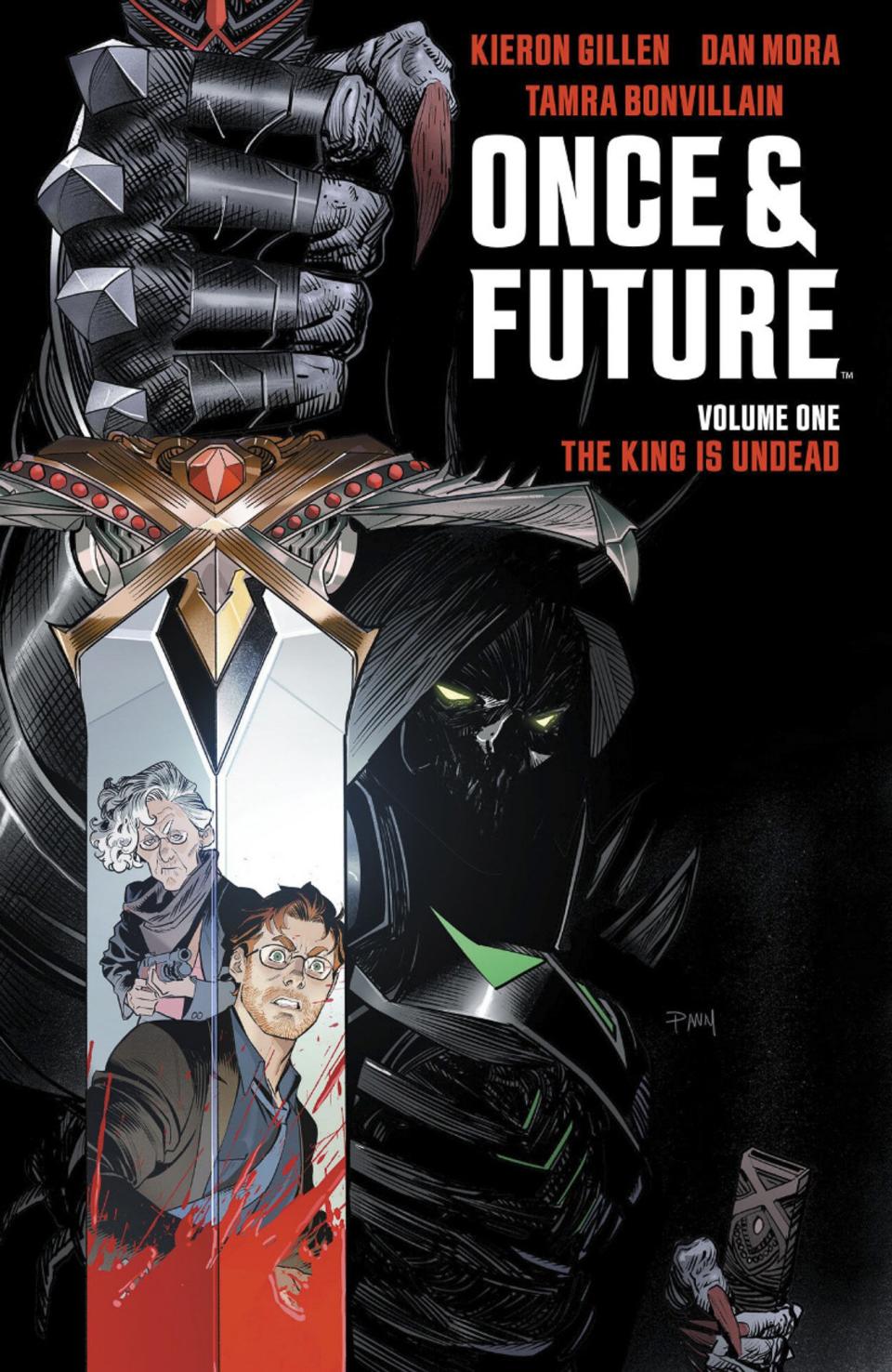
BOOM! Studios The cover to the first volume of 'Once & Future'
Once & Future (Boom Studios)
Kieron Gillen (writer), Dan Mora (artist)
The underlying premise of The Rings of Power is that J.R.R. Tolkien's work is worth revisiting and remixing even years after the author's death and several successful big-screen adaptations. But at what point in the cycle of endless retellings does a classic legend become… necrotic?
That's one of the questions posed by Once & Future, in which King Arthur comes back from the dead, but as a horrifying, bloodthirsty zombie whose values and conception of Britain are wildly different from those of modern people. The only thing standing in his way is one badass old lady and the clumsy grandson she raised to be the perfect knight without him ever knowing it.
Writer Kieron Gillen has a knack for juxtaposing medieval fantasy and the modern world (you really should read Die, his incredible D&D comic with Stephanie Hans, if you haven't — there are many Tolkien references!), and he takes it to another level in Once & Future. Meanwhile, Dan Mora draws everything from bad dates to zombie sword fights and makes them all look incredible.
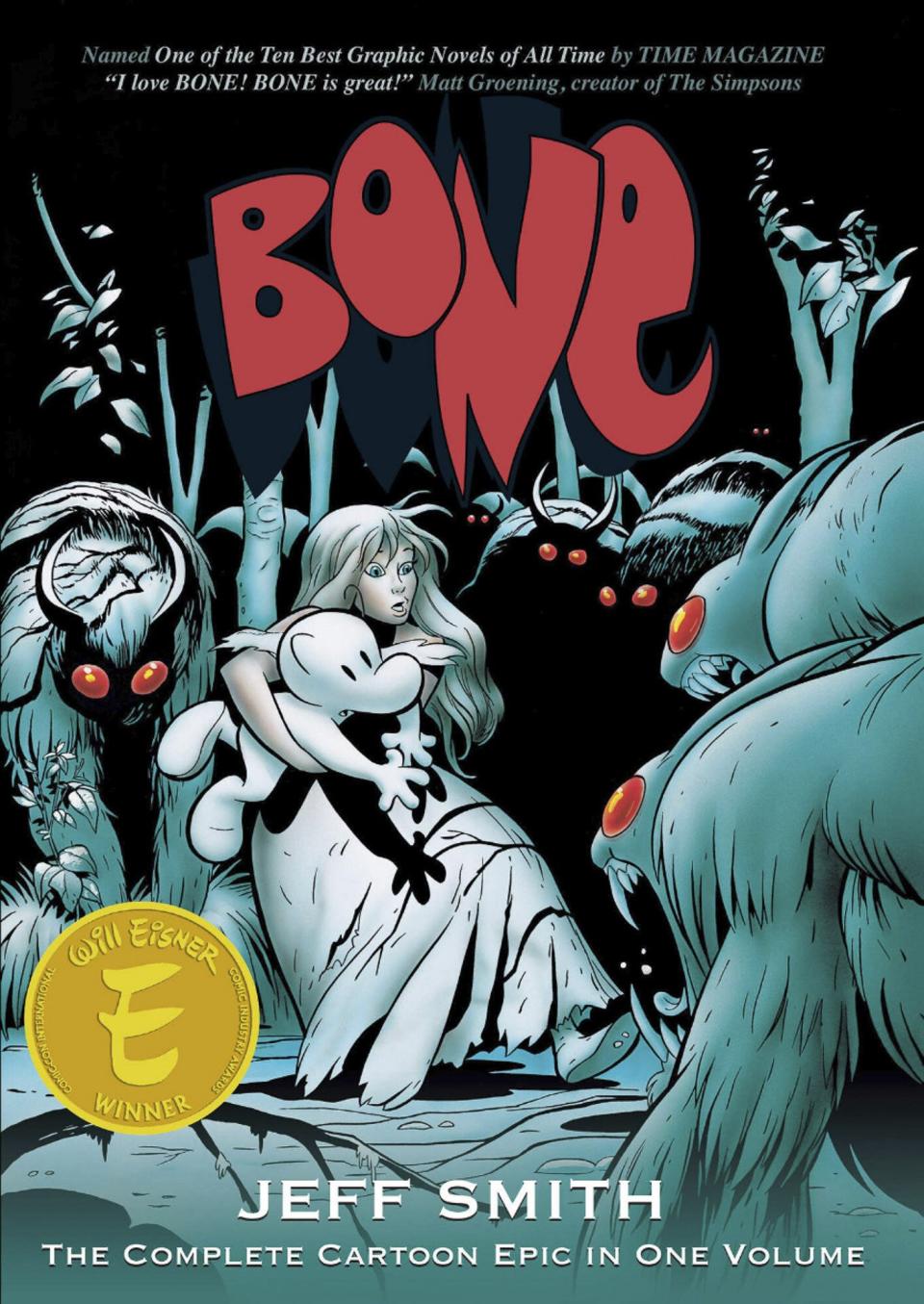
Cartoon Books The cover of the complete collection of 'Bone'
Bone (Cartoon Books)
Jeff Smith (writer, artist)
At this point it feels like Amazon's huge investment in its Lord of the Rings show and HBO's continuation of Game of Thrones might be the only pop culture forces capable of rivaling the Disney empire. That dynamic makes this feel like a perfect time to revisit Jeff Smith's classic comic Bone, which dropped lovable, Disney-esque cartoon characters into a sprawling fantasy setting on par with Middle-earth or Westeros.
But then again, it's never a bad time to revisit Bone. Best read in its all-in-one edition (but also available in smaller installments), Bone begins with a trio of cartoony cousins (brainy Fone Bone, himbo legend Smiley Bone, and conniving con man Phoney Bone) getting kicked out of their hometown of Boneville after Phoney's latest scheme goes wrong. Without quite realizing it, they end up quite far afield in a medieval land full of monsters, dragons, and princesses. Bone starts small, with Fone and then his cousins being taken in by a young woman and her grandmother in their humble hut in the woods, but it grows and grows until it truly earns the designation of an epic.
Plus, speaking of fantasy TV, Bone is supposed to become a Netflix animated series at some point. So why not get ready now?
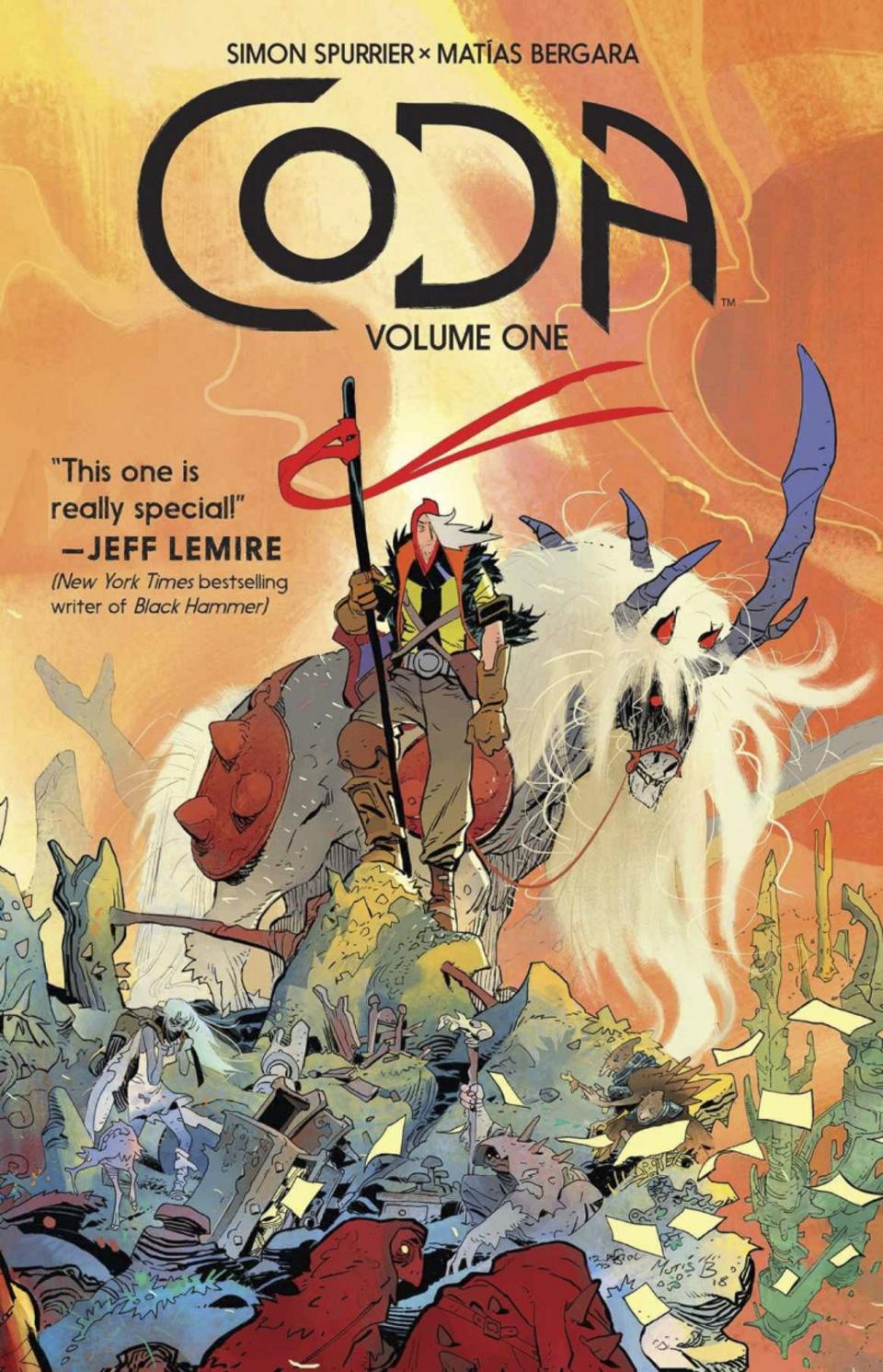
BOOM! Studios The cover of 'Coda' volume 1
Coda (Boom Studios)
Si Spurrier (writer), Matías Bergara (artist)
Prequels are all the rage right now in fantasy epics. Both The Rings of Power and House of the Dragon are set years before the stories that originally got viewers invested in Middle-earth and Westeros. But Coda takes the exact opposite approach to this genre.
True to its title, Coda is not a prequel but an epilogue for grand fantasy sagas. It asks the question: What happens after the Dark Lord is defeated, when the inhabitants of a once-magical realm have to pick up and carry on in the brave new world? Coda's protagonist ("hero" would be a strong word) is Hum, a bard who wanders the wilderness with his foul-tempered pentacorn (that's like a unicorn, but with five horns instead of just one).
Now, anyone who's played Dungeons & Dragons knows that bard is a strange class. Their magic mostly comes in the form of music, and is used to support other characters rather than destroy enemies outright. That makes Hum an unusual fit for the role of lone-wolf adventure hero, but he isn't searching for his own glory; Hum just wants to save his wife, Serka. Since Coda is told from Hum's point of view (not just following his actions, but also narrated in the form of letters to Serka), this is how the situation is described to us. But as the story goes on, it becomes clear that Serka is a lot stronger than Hum gives her credit for, and maybe doesn't actually need saving in the way he imagines.
So there's a unique angle on the fantasy genre, a fascinating central relationship, and truly eye-popping art from Matías Bergara. All that makes Coda a must-read for anyone currently ensorcelled by epic fantasy. Once you read it, you can see Bergara and writer Si Spurrier take their creative partnership to the next level in their recent wordless comic Step by Bloody Step.
Related content:

